By Marcin Wojtyczka
6 minutes readUseful personal safety equipment for long-distance voyaging: PLB, AIS MOB, and EVDS.
If worst comes to worst and you fall overboard, it may be difficult to find you, even in a moderate swell. It will be worse if no one sees you go into the water. So, if you fall overboard, or your boat is suddenly lost, you’ll need to raise an alarm and ensure that you can be located. A device such as a personal locator beacon (PLB) or a man overboard (MOB) device can assist in your rescue. In recent years, these devices had become more affordable and should be strongly considered for any ocean sailor.
Personal Locator Beacon (PLB)
PLB sends a distress message to Rescue Coordination Centre (RCC) via the Cospas-Sarsat satellite system. PLBs are waterproof and capable of transmitting your position for more than 24 hours, they are the ultimate last call for help. The distress message contains your position, who the beacon belongs to and additional emergency contact info.
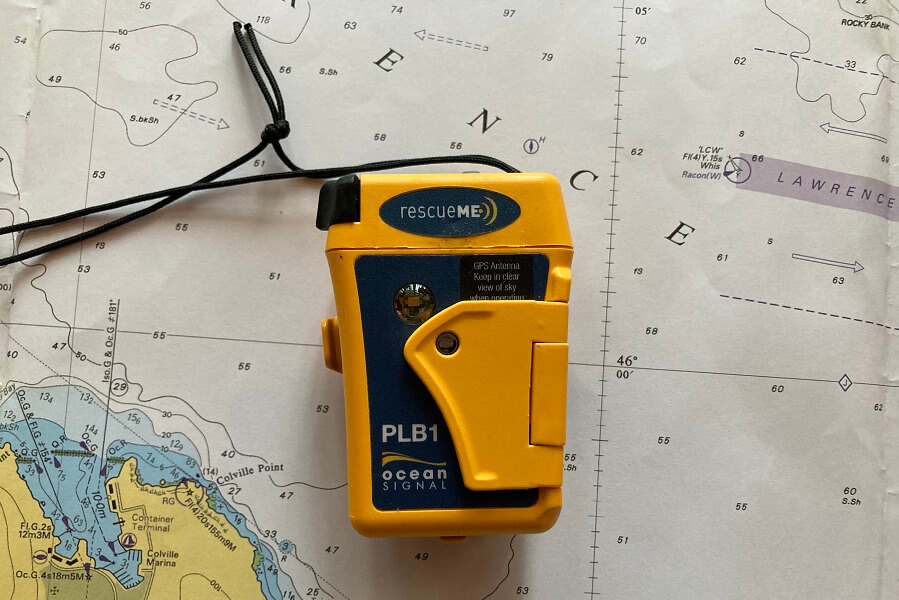
Advantages:
- message will be sent to the coastguard so that they can coordinate rescue action
- 5+ Year Battery Life (the unit must be sent to an authorised service dealer for replacement)
- 24+ hour operational life
- Portable
- Operates globally
- Waterproof
- Fast accurate positioning
- Can be equipped with a flotation pouch
- No subscription
- Dead simple to use
- Reliability even in most hostile environments
- Can be carried on board a passenger aircraft as either checked-in or carry-on luggage
Disadvantages:
- Won’t alert those closest to you (crew, vessels in the vicinity)
- Needs to be manually activated (you can only activate it if you are conscious). The beacon does not transmit until it is activated in an emergency
- Without GPS, the location accuracy extends out to 5 km. A PLB with GPS reduces the radius to 100 meters!
- It may take up to 2 hours for an alert to be received (typically less than an hour). A PLB with GPS reduces that to several minutes
- Can only really send a signal when the aerial is above the water
Based on the above, make sure to buy a PLB with GPS to give the rescue services the quickest and most accurate position.
How it works
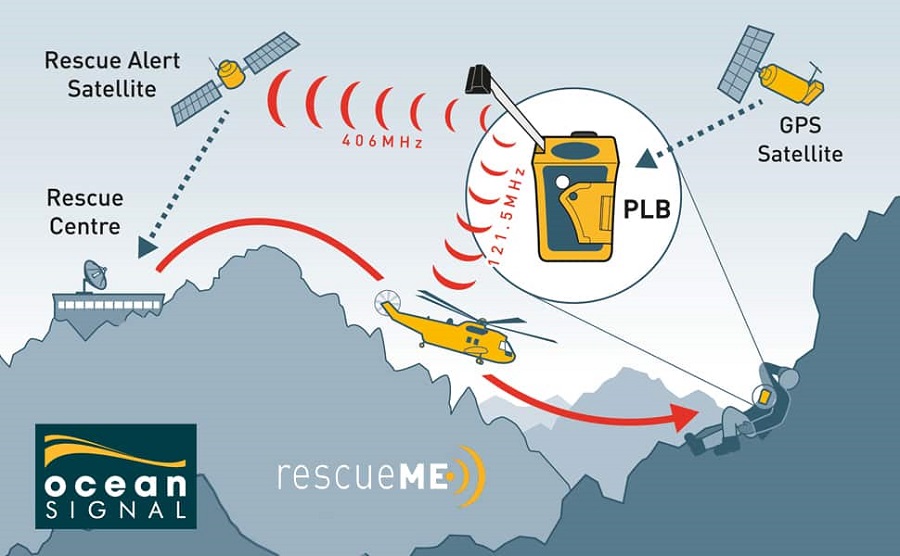
Cospas-Sarsat does not undertake search-and-rescue operations. This is the responsibility of national administrations that have accepted responsibility for SAR in various geographic regions of the world.
PLBs are very useful devices but they must be manually activated, they can’t be activated by water. So you must be conscious to activate one, which limits the PLB’s usefulness as a MOB device.
Registering PLB
Once you’ve purchased the PLB beacon, you must register it with the Maritime & Coastguard Agency of your country so that your information is automatically available to rescue services. A registered beacon allows Search and Rescue to phone your emergency contacts and look up important information to initiate a response as soon as possible. An unregistered beacon can cause a delay in the response.
Some countries have complicated procedures for registering a PLB. For hassle-free registration, you can register your PLB in the UK here, even if you are not a UK resident. It takes a few minutes. You can use your PLB anywhere in the World.
AIS MOB
An AIS MOB uses an AIS (Automatic Identification System) signal to transmit the position of a person who has fallen overboard (MOB) to all ships that are equipped with an AIS receiver over an area of several miles (all SOLAS vessels must carry AIS). An AIS emergency transmitter determines the exact position of the person in the water using its integrated GPS and relays this constantly.
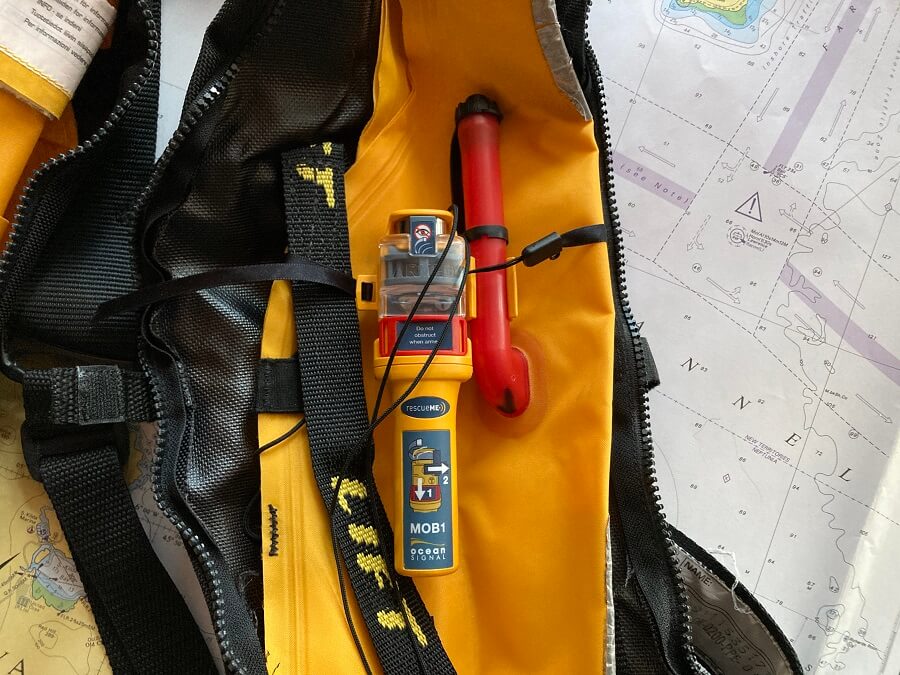
Advantages:
- MOB message will be sent to all boats in your vicinity
- Integrated DSC transmitter can send a DSC message to a programmed MMSI, e.g. your own boat
- Accurate positioning
- Integrate with AIS
- Integrates with a lifejacket
- Automatic activation
- 24+ hours of operational life
- 5+ Year Battery Life (the unit must be sent to an authorised service dealer for replacement)
Disadvantages:
- Range limited to the VHF signal broadcast range (line of sight). Since the antenna is going to be very low, at the level of the sea, the range is likely to be limited to about 10 miles
- Can only really send a signal when the aerial is above the water
How it works
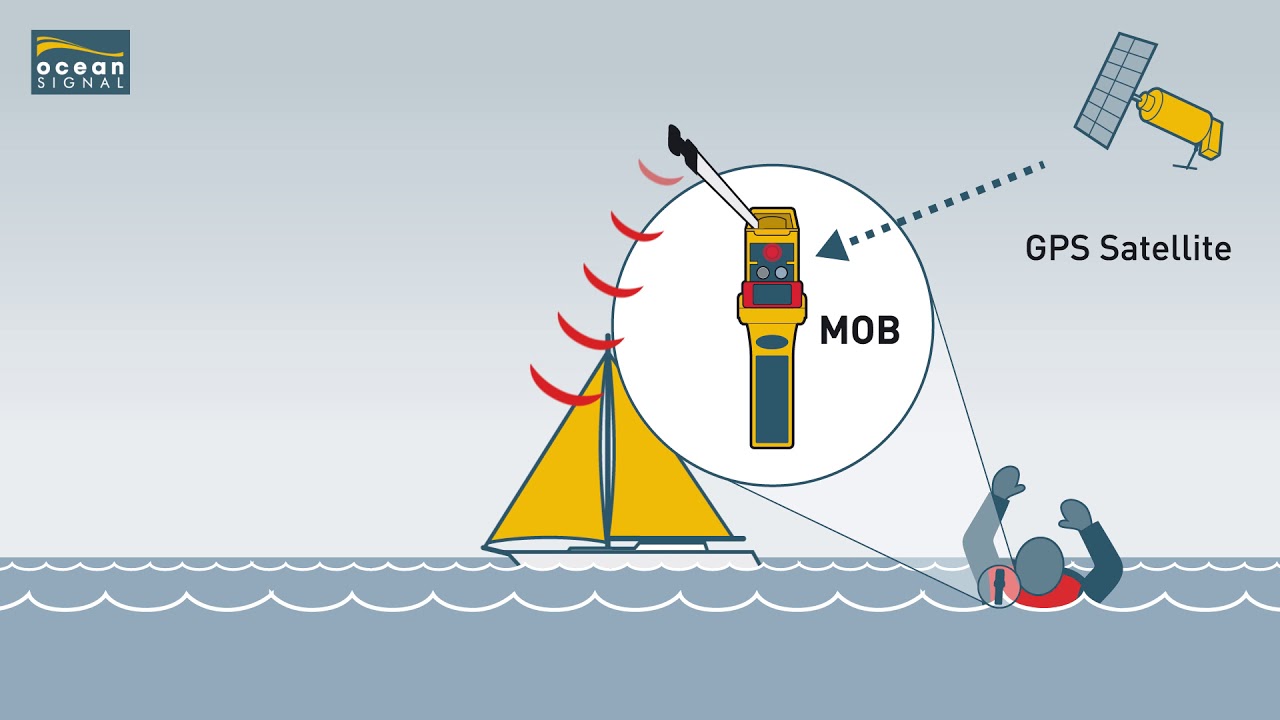
Pairing MOB1 with your boat’s MMSI
You should program your MOB device so that it can alert your crew on DSC if you fall overboard. You can find the instructions here. The easiest way to program the device is to use the web-based version (works on smartphone / tablet / pc).
Steps:
- Go to the web-based version of the MOB1 Configuration Installer here and follow the instructions
- Enter the MMSI of your boat
- Disarm the device
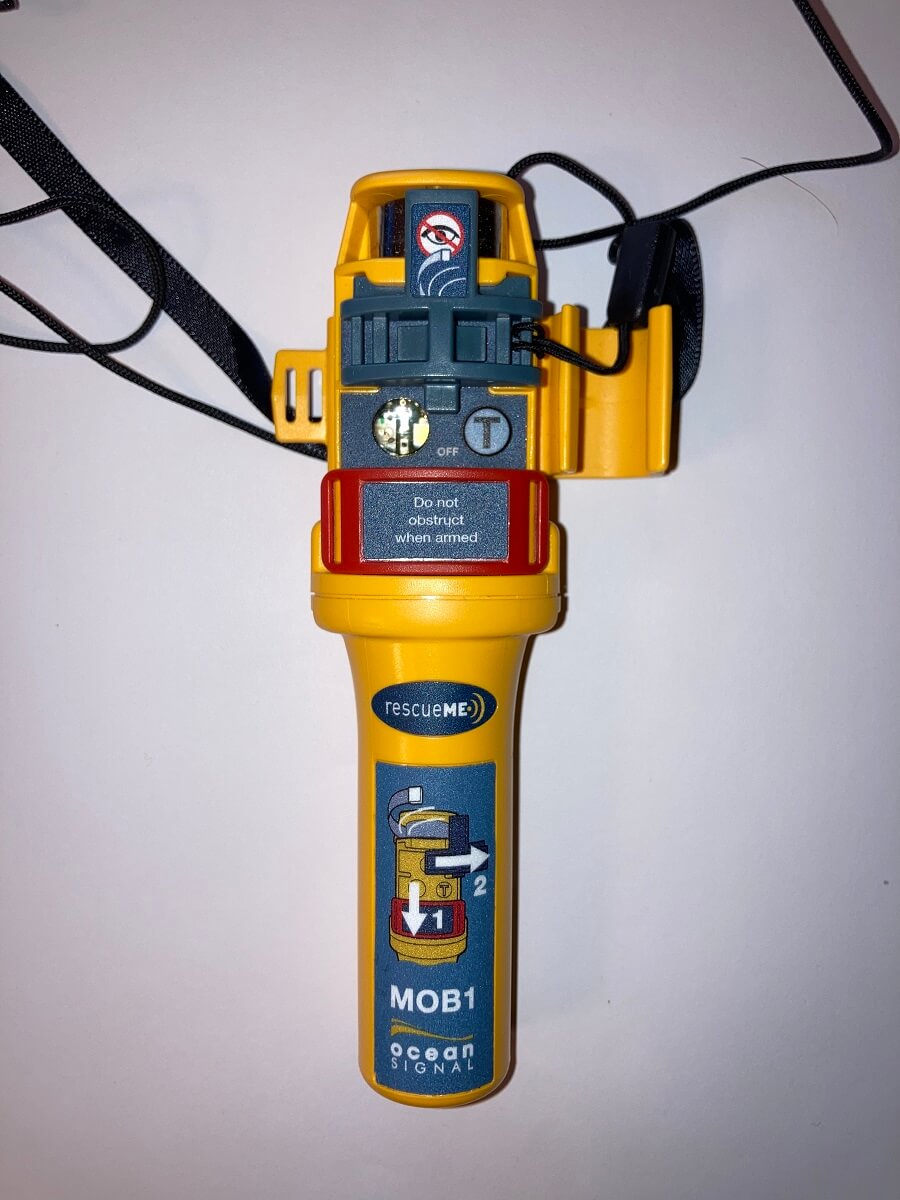
AIS MOB disarmed - Place rubber programming adaptor in place
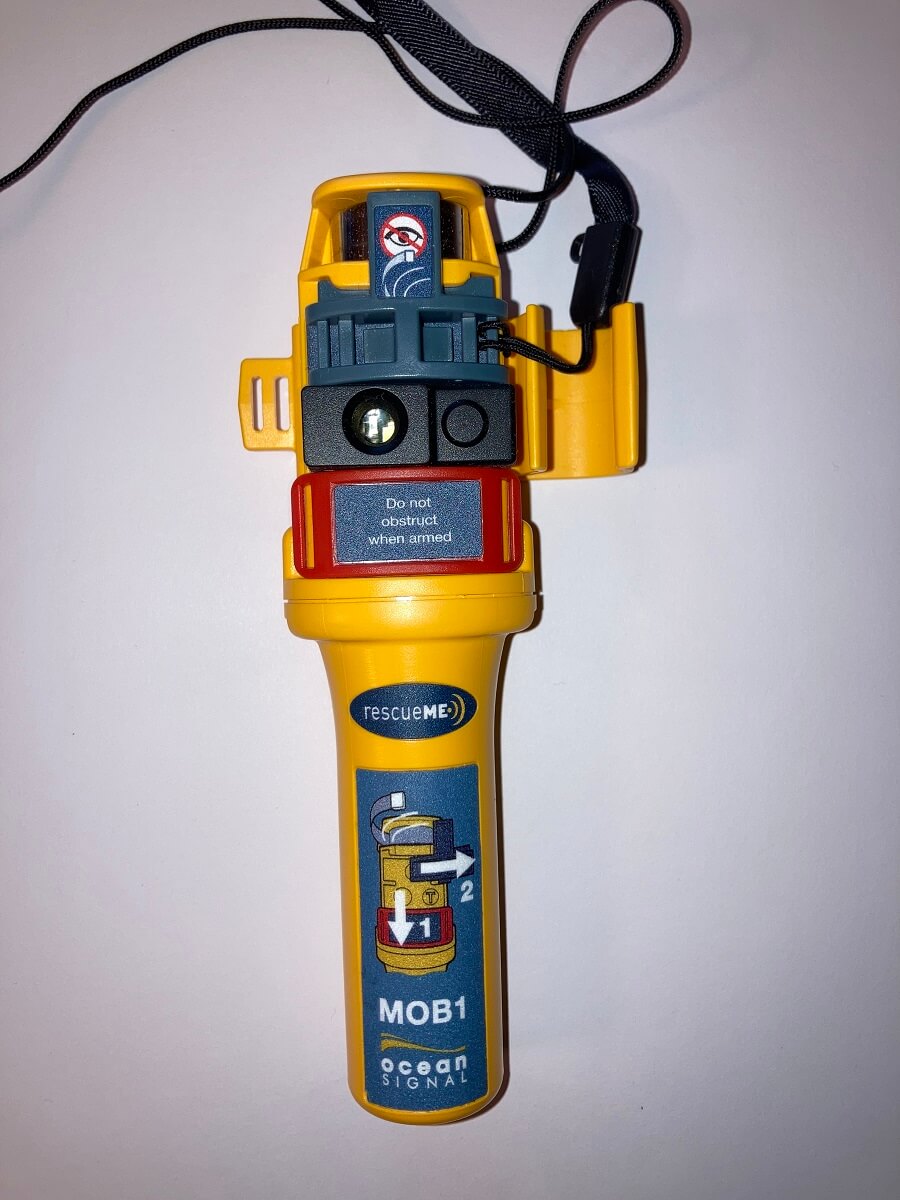
AIS MOB with the rubber programming adaptor in place - Press the test key on MOB for over 15 seconds (Red LED will flash, stay on, it will flash slowly when the Green LED will start flashing, release the key)
- Wait for Green LED to go off, then place MOB over the displayed box with rubber Programming Adaptor against the screen and wait until the progress reaches 100%
- If MOB1 is flashing Green programming has been successful, if MOB1 is flashing Red you have to try again
EVDS (Electronic Visual Distress Signals)
The EVDS is a powerful electronic flare used for signalling in an emergency ensuring continued visibility over a longer period. Unlike single-use pyrotechnic flares, the EVDS can signal for many hours repeatedly and in different modes. The unit is safe to store and operate.

Advantages:
- Several hours of battery use
- Safe to operate and store (no danger of high temperature)
- Several modes of operation
- Range up to 7 miles
- Excellent visibility for aircraft and helicopter SAR
- Easy change replaceable battery
- Waterproof
- For pleasure vessels, seagoing commercial vessels, and most non–seagoing commercial vessels, EVDS may be carried in addition to the required distress signalling equipment and used to identify the location or transmit the SOS distress signal
Disadvantages:
- Not compliant with the SOLAS because it does not meet the light intensity required by the IMO for distress flares. This means that if your commercial vessel is required to carry flares, they cannot be an EVDS product (you can use it in addition but not as a replacement)
- EVDS may not be recognised internationally as a distress signal
Final note
In deciding which device is most suitable for your needs you need to assess the risk. If you have a limited budget and you need to decide which product to buy, my first priority would be as follows for offshore sailing: 1. PLB, 2. AIS, 3. EVDS
PLB won’t notify anyone in your vicinity, but it will alert the professionals. Having the AIS MOB is great as it will alert the crew allowing them to take immediate actions. But consider this. In the heat of the moment, your crew might not be able to get you safely back on board. You will probably increase your chances of survival if professionals are involved.
If you plan to buy new gear, consider a compact device that combines PLB and MOB AIS in one unit.
Fair Winds and Following Seas!
- Related articles:
- Seamanship
- Safety